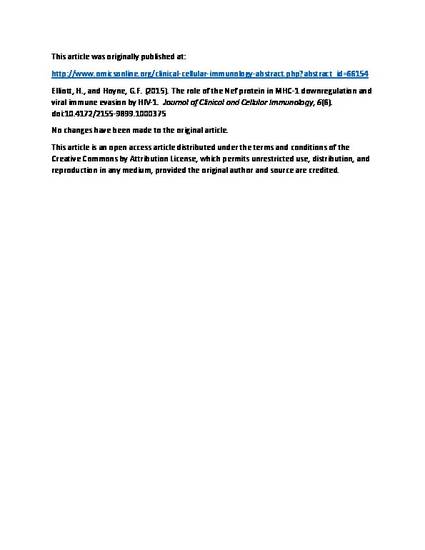
The Nef protein is a major determinant of pathogenicity caused by the human immunodeficiency virus (HIV) and is encoded by the nef gene within the genomes of primate lentiviruses HIV-1, HIV-2 and simian immunodeficiency virus (SIV). The HIV Nef protein subverts the intracellular membrane traffic to mediate endocytosis of a number of cell surface receptors to accelerate their degradation. In this review we will examine how the multifunctional Nef can mediate down regulation of the Major histocompatibility Complex (MHC) I complex proteins from the surface of infected cells as a means of immune evasion by HIV. By selectively downregulating MHC-I HLA-A and HLA-B haplotypes, while maintaining the expression of HLA-C, HLA-E and HLA-G the HIV virus is able to avoid recognition by both the NK and cytotoxic CD8+ T cell effector responses. This protects the virus from cell lysis and enables it to hide from the cell-mediated immune system.
- HIV-1,
- HLA,
- MHC,
- Nef,
- NK cells
http://www.omicsonline.org/clinical-cellular-immunology-abstract.php?abstract_id=66154
Available at: http://works.bepress.com/gerard-hoyne/7/
